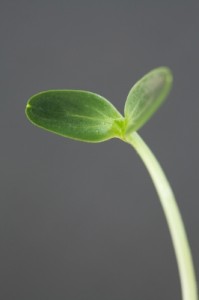 For some reason Mother Nature has been particularly indulgent of us this year. The sun is our companion almost daily and at every window is a burst of green never seen before in March. The arrival of spring brings out my giddy excitement about changing our weekly menu. I pull out all the cookbooks and dream of all the delicious meals with all the new bounty. There’s something life-affirming about putting away the stews, squashes, brown rice and roasted vegetables. Not to mention visually appealing. Good bye, brown. Hello, emerald!
For some reason Mother Nature has been particularly indulgent of us this year. The sun is our companion almost daily and at every window is a burst of green never seen before in March. The arrival of spring brings out my giddy excitement about changing our weekly menu. I pull out all the cookbooks and dream of all the delicious meals with all the new bounty. There’s something life-affirming about putting away the stews, squashes, brown rice and roasted vegetables. Not to mention visually appealing. Good bye, brown. Hello, emerald!
What also makes me happy is that the interest in local eating is starting to stand for healthy eating and the healing properties of food. Even five years ago it was difficult to find readily available organic or gluten-free choices. Now it is easy to find restaurants and food stores that have something for everyone. It won’t be that long before the “organic section” with the sad-looking fruits and veggies is a thing of the past.
Where I was surprised to find an incredible resource for healing foods was in traditional Chinese medicine. When I started using TCM for stress relief my favorite part was the acupuncture. I thought the half hour of undisturbed peace and quiet couldn’t be topped. But when I looked further I found that the approach to food was even more powerful. TCM’s reliance on whole foods, prepared simply and eaten in season rivals the most committed foodie.
Spring eating cries out for salads packed with fresh, young greens and shoots, light foods and simple meals to energize you for all your chores. According to TCM, the best kinds of foods are the ones that reflect the rising and active nature of spring. After the hibernation of winter it seems like I’ll never have enough energy to rise to the call of spring. So I asked my TCM doctor, Dr. Lawrence Gao, which spring foods will help prepare for the season. Here are his suggestions:
- Huai shan root, also known as shan yao, Chinese yam, dioscorea batatas, or burdock root. Dr. Gao put this at the top of the list because it gives much positive energy. He suggested to peel, slice and put it into soups with pork or chicken, or mix it with green beans and red pepper for a side dish. He also suggested mixing the root with goji berries for additional energy.
I bought a root at T&T and cooked some yesterday for dinner. I found it easy to eat, bland with a texture of potato and just a hint of pear. I mixed it with some spinach and peas, drizzled with olive oil and a little salt. Where it gets funky is in the preparation. When it’s raw it is very slimy and almost impossible to hold to slice.Dr. Gao has another recipe for huai shan root that is popular with kids: take a piece of root, about the size of a potato, and mix it as a smoothie with some frozen fruit like papaya, pineapple or strawberry, a banana, 2 to 3 tablespoons of yoghurt and some hot water, blended together. This makes a couple of smoothies to have at breakfast.
- Dates. This is a much easier sell for the family. I’m planning to make date squares for them to snack on when they get home.
- Chives. These are Chinese chives, more like our garlic chives. Dr. Gao said they are particularly good for men to eat during the spring. They’re a bit tougher than regular chives and need cooking. I found a good recipe for eggs and Chinese chives here, along with a lively discussion about whether foodie favourite ramps or Chinese chives are better.
- Spinach. Lightly steamed and served as a side dish a few times a week.
- Honey. Best taken as your first drink of the day. It is okay to mix it with lemon juice and use room temperature water. This particularly good for kids.
M
My favorite western author in this area is Paul Pitchford, a teacher about nutrition that blends modern nutrition and Asian traditions. His book is exhaustive about the properties of foods, when and how to eat them, and how to use them to reduce or avoid the symptoms of disease. As he says:
Thousands of years ago, master healers in China perceived a way to classify food and disease according to simple, easily observed patterns: one eats cooling foods for overheated conditions, and warming foods are best for people who feel too cold. Detoxifying foods are for those who carry excess toxins, building foods are good for deficient persons, and so on. This system can be highly effective even if the medical name of a disease is not known.”
Source: Healing with Whole Foods: Asian Traditions and Modern Nutrition. North Atlantic Books, 2002.

